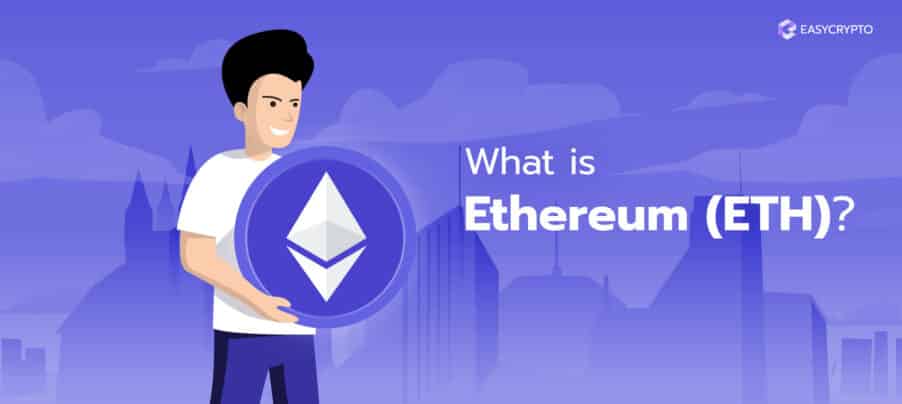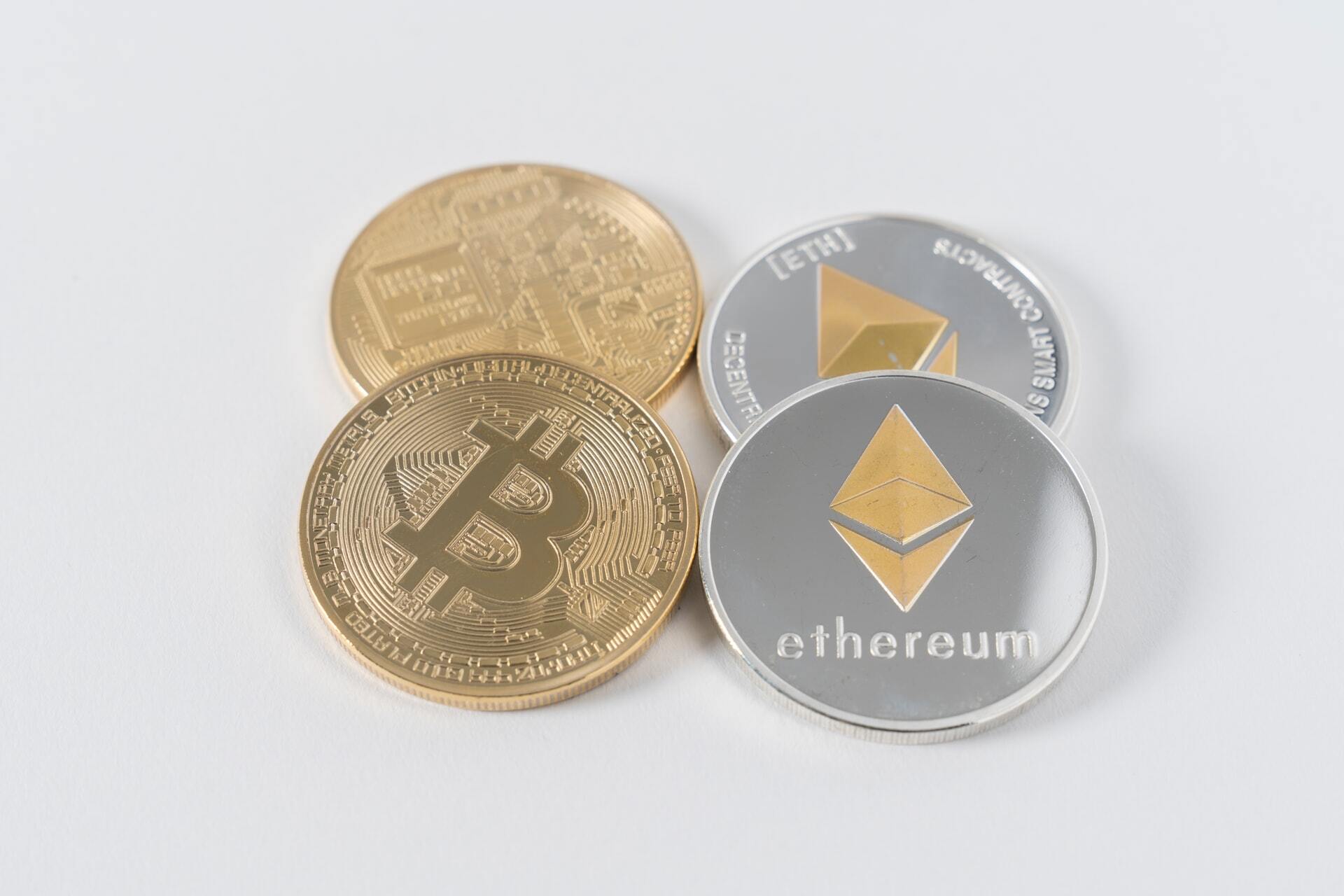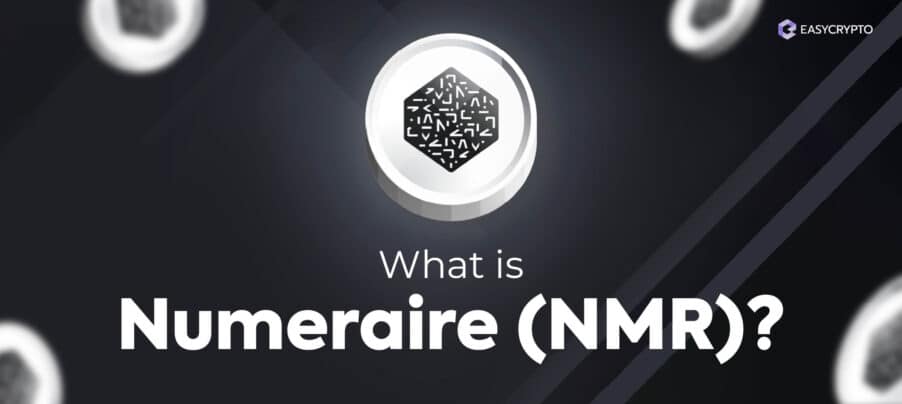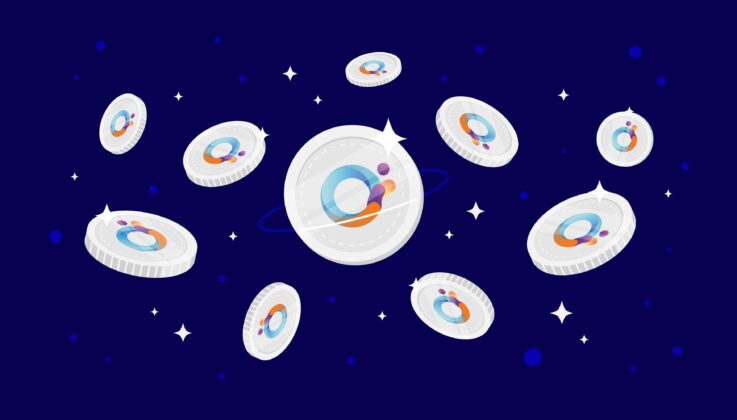What is Ethereum (ETH)? How Does It Work?
Take a closer look at Ethereum (ETH) and how it revolutionised the blockchain industry and paving the future for the crypto ecosystem.


In the crypto community, you may hear as many mentions of Ethereum as Bitcoin. You may also know that Ethereum is the second-most popular name in the crypto space, and perhaps you’d like to become an adopter of Ethereum.
In this guide, let’s get to know about Ethereum, what it is, how it works, what it offers, and what the future holds for Ethereum.
Jump the line: Click here to buy Ethereum today.
What is Ethereum?
Ethereum is an open-source, decentralized blockchain platform that supports smart contracts and decentralized apps (Dapps). The native cryptocurrency that fuels the network is called ether, or ETH for short.
Many people who are just getting started in the crypto world will mistake “Ethereum” as a cryptocurrency. The name actually refers to the blockchain or the global network of computers that work together as a platform to process transactions and more.
When you see the price of “Ethereum” on sites like Coinmarketcap, you’re actually looking at the price of ether, the native cryptocurrency that is used as a standard token of value on the Ethereum blockchain.
At the time of writing, ether is currently trading at $3,486.88 per unit with a market cap north of $403 billion. This figure is right after reaching a new all-time high of #3,534.98 just a few hours earlier on May 5th, 2021.
Learn more about Ethereum from our YouTube guide:
More in detail: What is Blockchain Technology? — A Simple Guide.
What makes Ethereum different from Bitcoin?
Bitcoin (the cryptocurrency) and ether are similar in the way that they are both digital tokens of value that exist in separate networks. Both cryptocurrencies can be used as payments for goods and services offered by some merchants.
However, the Bitcoin network and Ethereum are vastly different things and offer different functionalities. The Bitcoin network can only process simple transactions of bitcoin from one party to another.

Ethereum, on the other hand, is so much more capable than just processing peer-to-peer transactions. On Ethereum, two parties can make conditional transactions.
That is, where the transaction will only execute if and only if certain conditions are met. This is all possible through the advent of smart contracts – which Ethereum has pioneered.
More on Bitcoin: Click here to read our complete guide on Bitcoin.
Introduction of smart contracts
Within the context of cryptocurrency, a smart contract is a self-executing program that activates automatically when the conditions in which the terms of the contract are designed for has been met.
Smart contracts were first introduced and pioneered on the Ethereum blockchain. It facilitated the execution of transactions and agreements to be carried out among anonymous parties without the need of a central authority or external reinforcement.
Smart contract uses
Suppose you want to buy a product from an online store that you haven’t trusted completely. When ordering something online, you are usually required to pay upfront, and then you must wait for the promised delivery.
On a centralised marketplace, like eBay, you need to trust the platform to become the facilitator of this promise, or contract.
The platform will hold your money while keeping track of your product. Once the product reaches you, the platform will deliver the money to the seller.
In a decentralised network like Ethereum, where you are not required to trust anyone, you can rely on what is known as a smart contract to become the facilitator. Smart contracts can hold your ether while keeping track of the supply chain.
Once the product is delivered to a specific checkpoint (it could be your house, a post office, or any other agreed-upon location), the smart contract will execute the payment autonomously without the need of supervision.
Dig deeper: Read our full guide on smart contracts and how they work.
What are decentralized applications?
Decentralised applications are just like the web or mobile applications that you are already familiar with. The difference is that decentralised applications (or dapps, for short) operate on a blockchain. On the other hand, regular applications rely on a private server owned by a hosting company, hence they are centralised.
Dapps are censor-resistant – meaning that since they do not exist in a private server owned by one company or are restricted in one geographical area, no government can censor or tamper with the application files.
Dapps rely on smart contracts to function. Without a third party to facilitate transactions that happen within the application, smart contracts must therefore play a crucial role to protect the interests of all parties that are involved.
Read also: What is DeFi (Decentralized Finance)?
“Code is law” on Ethereum
Another interesting property of dapps is that once they are deployed into the Ethereum network, the developers have no more control over them. Unlike regular applications, the developers can make no further changes to the code and the smart contract.
This leads to the common saying that “code is law”. Once a dapp is deployed, it is immutable and will treat all users of the dapp equally, forever.
This is why dapps must be meticulously tested for all use cases so that malicious users cannot abuse dapps to drain funds or harm other users.
The code for dapps and their smart contracts must be made public so that they are able to be audited independently by potential users or their representatives.
Check the latest rates for ether: Click here to view the latest prices for ETH.
What are the use cases of Ethereum Dapps?
Ethereum was developed under the premise of enabling other developers to “codify, decentralize, secure, and trade just about anything”. How has Ethereum been used in real life?
Below are two examples of the most popular decentralised applications:
Uniswap
Trading crypto assets is currently one of the most common activities of crypto traders and investors right now, as the industry is growing larger every year. In some countries, however, governments are preventing the use of crypto exchanges.
Uniswap is the biggest decentralised crypto swapping platform where anyone can trade and swap just about any cryptocurrency or token. Without requiring to follow a KYC protocol, users impacted by crypto bans can use Uniswap to continue making a living.
Due to the decentralised nature of Uniswap, anyone can sell any crypto token, resulting in a few cases of DeFi scam.
Looking to buy? Click here to start investing in Uniswap.
Aave
Aave is a decentralised money market platform where borrowers and lenders can come together to meet their financial needs, without going through the hassle of the traditional bank system.
Anyone can deposit their ether as collateral to mint stablecoins, which is a special type of cryptocurrency that is pegged to a real-world fiat currency. Aave had immensely rewarded early users who deposit ethers, as they were the first to provide liquidity in Aave.
Interested in Aave? Click here to invest in AAVE today.
…and it goes beyond DeFi!
We’ve also listed five more use cases in our previous article. These decentralised applications are some of the most widely used in the market to date, not to mention dozens more that have been successful.
This inadvertently increases the demand for ether, which explains why it is on a steady course upwards.
What are gas fees and why is it becoming a problem?
Gas fees are essentially like transfer fees that we pay when we want to process a transaction to a different bank. In Ethereum’s case, special network participants (called miners) voluntarily use specialised computers to validate, encrypt, and add blocks of transaction information onto the blockchain.
Gas fees are paid by users to compensate for the computational resources and power that the miners have expended, in the service of the Ethereum network.
Gas fees are paid in very small fractions of ether called gwei (sometimes referred to as a nanoether, or 0.000000001 ETH).
Mining and gas fees are all part of a security protocol known as proof-of-work, and it is the same protocol that Bitcoin uses to secure its blockchain.
What goes on under the hood of this protocol is a bit more technical for the average joe. But if you’re curious check out our take on proof-of-work below.
Read more: What is Proof of Work? Taking a closer look under the hood.
Some of the latest blockchain networks only partially use the classic proof-of-work, while others have already adapted to a different protocol entirely.
The reason for this is that with proof-of-work, computational power is sometimes utilised inefficiently to process information.
In an inefficient system, a sudden demand for transactions would result in ridiculously high gas fees.
At one point in February 2021 when the crypto industry was starting to boom, the gas fee for a single transaction was 0.058 ETH, which was $93.16 due to a great network congestion.
A solution is needed to make the system more efficient, sustainable, and scalable.
The development of Ethereum 2.0
The team behind Ethereum, led by Vitalik Butarin, has been developing an upgraded version of Ethereum, which will become a major hard fork of the network, namely Ethereum 2.0 (or Eth2).

What is commonly referred as Ethereum 2.0 is actually a series of gradual upgrades that help the current Ethereum version (called the Ethereum mainnet) to transition slowly to become its fullest potential. It has been an on-going development since 2014.
Learn more: Read our guide on Ethereum 2.0.
The Beacon Chain
While Ethereum mainnet runs business as usual, a new Ethereum blockchain on a test network called the Beacon Chain is undergoing experimentation that focuses on scalability.
Unlike the mainnet, the Beacon Chain introduces a new protocol to Ethereum which does not require miners and energy-intensive machines to secure its network.
This protocol is known as proof-of-stake – and it is set to make big improvements on the Ethereum network.
Related: What is Proof of Stake and How Does it Work?
Shard chains
The introduction of shard chains will allow Ethereum 2.0 to reduce network congestion by running parallel blockchains so that can potentially increase the bandwidth of transaction requests up to 64 times (the bandwidth will increase as needed, 64 shard chains being the planned maximum as of now).
While shard chains will be fully operational on the Beacon Chain in 2021, the full integration of the Ethereum mainnet will come sometime in 2021-2022.
The future of Ethereum
The integration of Ethereum mainnet to Ethereum 2.0 means that there won’t be any changes to the functionality of the ether that you have invested.
However, some investors who are already keen to test run Ethereum 2.0 are willing to stake their ether on the Beacon Chain. This involves converting ETH to ETH2, a currently irreversible process that allows a user to become a network validator.
Since this requires very thorough research to ensure the safety of your staked ether, please read further on Ethereum’s official guide to staking.
How to buy Ethereum in ZA?
With all that said, it’s safe to say that Ethereum is here to stay. In fact, Ethereum has been continually increasing in value since the beginning of 2021. Any savvy crypto investor will likely consider ether in their crypto portfolio.

Easy Crypto is a secure exchange platform that supports over 150+ coins and tokens, including Ethereum (ETH). We offer competitive rates, the flexibility of direct crypto swapping, and portfolio tracking amongst others.
Start here: Click here to start investing in Ethereum (ETH) today.
Share to
Stay curious and informed
Your info will be handled according to our Privacy Policy.
Make sure to follow our Twitter, Instagram, and YouTube channel to stay up-to-date with Easy Crypto!
Also, don’t forget to subscribe to our monthly newsletter to have the latest crypto insights, news, and updates delivered to our inbox.
Disclaimer: Information is current as at the date of publication. This is general information only and is not intended to be advice. Crypto is volatile, carries risk and the value can go up and down. Past performance is not an indicator of future returns. Please do your own research.
Last updated October 11, 2022





